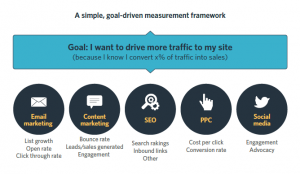— March 1, 2019
Artificial intelligence, automation, and machine learning technology are taking over manufacturing, service work, and many other essential business tasks, moving the world toward what some are calling a Fourth Industrial Revolution.
Unlike the Industrial Revolutions of the 19th century or the digital revolution of the 20th, automation affects not only workers in low-skilled jobs but also high-skilled workers in many professions. The companies who adapt and thrive in an era of automation are those that can adjust to these processes, while simultaneously training their employees in new skills and technology.
This is easier said than done for many. As McKinsey & Company pointed out in a recent report, nearly 1 in 4 companies say their executive team lacks the technical knowledge to lead organization-wide adoption of AI and automation.
Yet, “almost half the companies we surveyed,” McKinsey writes, “say they expect to take the lead in building the workplace of the future, but all stakeholders will need to work together to manage the large-scale retraining and other transition challenges ahead.”
In order for companies to prepare for the major shifts ahead, they will need to understand the answers to two questions: “1. How will demand for workforce skills change with automation? 2. How will organizations adapt?”
In this article, we’ll examine the biggest effects of automation, the most important skills employees will need to learn, and the technologies organizations need to implement in order to stay competitive in the new digital workplace. And we’ll look at how intranet software is key to helping businesses adapt.
The Effects of Automation
Along with downward pressure on wages and increased competition due to automation, the coming 10 to 15 years will see a dramatic shift in skills employees use on a day to day basis.
As more tasks become automated, expect to see increased demand for technical skill sets over others, namely those the McKinsey analysts call “higher cognitive,” “social and emotional,” and “technological.”
In terms of actual tasks, these skills are applicable to creative positions, like digital marketers and UX consultants, highly social positions like leadership and human resources, and of course, the heavily technological, like development and data science.
Meanwhile, demand will decrease for less technical skills like basic data input and processing. This type of work involves heavy doses of redundant tasks, which makes it perfect for automation.
Skill Shifts
The areas of largest growth in employment will require IT, programming, and other technological, scientific, and mathematical skills. Such occupations are projected by 2030 to see a change in hours spent of up to 55% in the US and 14 Western European countries.
Professions involving creativity and information processing as well as management and entrepreneurial skills will increase approximately 35% in hours spent by 2030. Lower-skilled employment in manufacturing and service work, on the other hand, will likely see an average decrease of 30% total.
But the news is not all bad for jobs where automation is taking over many essential tasks. On the contrary, explains James Manyika, senior partner at McKinsey, “we can have cases where machines pick up some of the repetitive work to free up humans to do other more rewarding aspects of their job.”
Ideally, we should see a shift toward more on-the-job learning, though this raises the question of whether companies should, or will, bear the costs of retraining employees.
Directions for Retraining
University of California professor of finance Bhagwan Chowdhry notes that “the distinction between work and learning might need to become more amorphous…. We need to think about getting away from the traditional five-day working week to one where I spend 60% of my time doing my job and 40% learning on a regular basis.”
The skills workers need to learn include IT and programming, data analysis, and design. They also include what Chris Huff, Chief Strategy Officer at Kofax, calls “creative problem solving.”
Companies that succeed in the new digital environment will be those that implement “Intelligent Automation” strategies that make the best use of the complementary abilities of machines and human workers. Machines excel at performing laborious and repetitive tasks and streamlining business process management projects to reduce costs and improve efficiency. But when it comes to creativity and social skills, humans still have the upper hand.
Jobs in medicine, music, writing and editing, and market research, which require such higher cognitive skills as creativity, critical thinking, and advanced statistical analysis, will also see an increase in demand.
Transformative technologies
Automation needs a platform of complementary technologies to succeed in any organization.
To support productivity and collaboration, employees will need to access workplace resources outside of the office. Businesses should oblige, not only to increase output, but also because employees with the most desirable skills seek out flexible work environments that allow them to do their tasks remotely.
These factors are leading us to a truly digital workplace, where remote teams rely on enterprise mobile solutions to collaborate. As Daniel Newman writes at Forbes, “it’s all about the cloud…. The cloud is arguably the number one factor in the changing modern digital workplace.”
Cloud solutions are cost effective, time- and space-saving, and customizable according to a business’s specific needs. Cloud services and other technologies like virtualized desktop infrastructure (VDI) allow employees to work from practically anywhere without compromising security.
In the same way that companies focus on the user experience for their products, they’ll need to commit to optimizing the employee experience. All the potential of automation will be lost if employees don’t have intuitive systems to find information, collaborate, and execute the complex work for which automation is freeing up their time. Luckily, we’re entering a golden age of SaaS technology, so business leaders aren’t short of solutions for enabling remote teams to perform at consistently high levels.
Remote teams will need support to keep their productivity levels up, but more and more companies are going fully remote and finding that flexible commuting policies work well for their business model and their employees’ busy, increasingly mobile lives.
As Forbes reports, the FlexJobs top 100 companies with remote jobs list contains some of the biggest players in tech, medical/health, sales, education, and customer services, including Amazon, UnitedHealth Group, Dell, Pearson, Aetna, and Humana.
These companies either offer 100% remote work or partial remote work to employees, and they have provided support systems to help remote teams succeed, demonstrating that organizations themselves will need to restructure how they function in order to accommodate the new rate of digital innovation. Instead of top-down processes, agile methods that empower those closest to the work to make decisions will take hold.
The result will not only be a workforce that primarily focuses on solving complex problems, but also one that does so in cross-functional, sometimes self-organizing, teams.
Conclusion
In a word, the future of workplace is complex. A fully or even partially-automated digital workplace will look profoundly different than what we know today.
“Reports suggest,” writes Richard Gray at the BBC’s Future Now blog, “that 47% of people employed in the US are at risk of being replaced by machines.” That number drops to 35% in the UK but rises to a possible 75% in developing countries.
On the other hand, recent research by organizations like the World Economic Forum shows that automation could create “a net of 55 million new jobs,” Huff reports, in many of the sectors outlined above.
Making the transition to what Huff calls Industrial Revolution 4.0 will require workers to learn new technological skills and hone those unique human abilities machines can’t replicate. It will also require companies to find the right balance between automating tasks and hiring—and equipping—workers with social and technological skills, critical thinking abilities, and creativity.
Business & Finance Articles on Business 2 Community
(99)
Report Post






